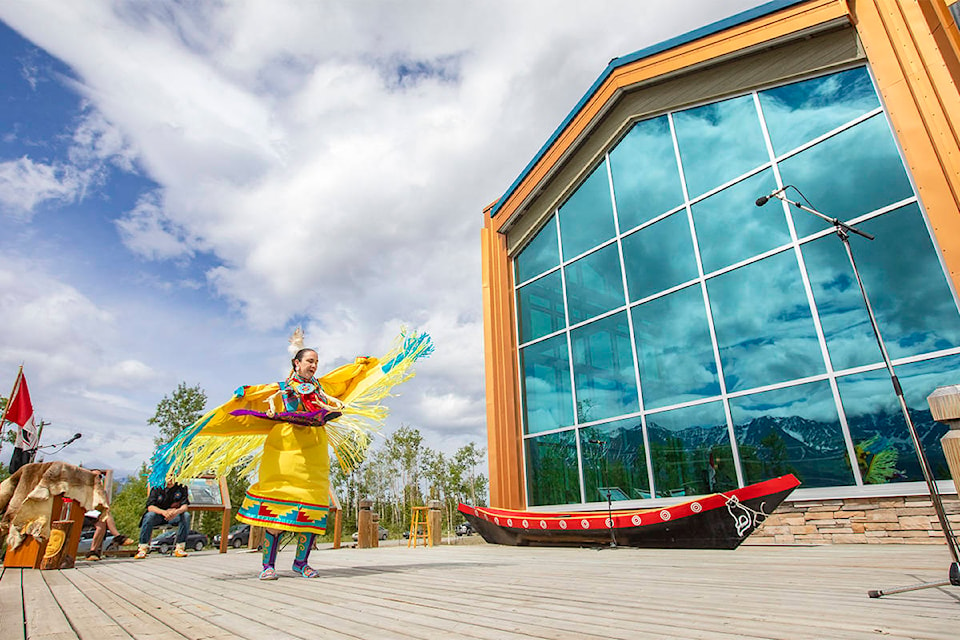Haines Junction was alive with the sounds of music over the weekend, thanks to the Dákù Nän Ts’éddhyèt (Our house is waking up the land) Dance Festival.
The third biennial gathering at the Da Ku Culture Centre featured perfomers from across North America and was a mix of traditional and contemporary Indigenous artists
The line up included Tall Paul, a Minnesota based Anishinaabe and Oneida hip-hop artist; the New Dawn Drum Group, a fivesome of young women dummers from Saskatchewan; Laura Grizzlypaws, a singer and dancer in the St’át’imc tradition from British Columbia; Louis Suluk and Patricia Kabultsiak, throat singers from Nunavut; and many others.
Nyla Carpentier, a veteran fancy shawl powwow dancer from Vancouver, B.C., performed at the festival for the second time.
“For me, coming to these events is another way to keep on revitalizing dances, language, and land,” said Carpentier, “and also the way that we come together and share cultural roots too.”
Gathering and sharing is something that Indigenous people have been doing for thousands of years, she said, and this is a modern day form of that.
In the past it was hunting and fishing, said Champagne and Aishihik First Nation (CAFN) Chief Steve Smith, and today it’s to have fun, eat good food and watch performances.
“Whenever you experience something that is great and powerful, the people you share it with, you always have attachments with,” said Smith. “We’re creating partnership and attachments for people.”
CAFN has always been about connecting and creating friendships, he said, and this festival really embraces that fact. It’s a festival about learning, growing and healing, which promotes a sense of community for those involved.
“It’s like a tool for us to build up the pride in our people and get our people motivated to do some cultural stuff and rebuild their spirits,” Smith said, “getting them proud of who they are as Champagne Aishihik First Nations as well as Indigenous people.”
Carpentier, for one, said she is very thankful to CAFN for organizing the festival every two years because it is important for all Indigenous people. The blend of traditional and contemporary dances is a reminder to everyone that Indigenous people are always continuing to grow and evolve, she said.
“We are hearing new songs and seeing new takes on regalia and it is evolving because Indigenous people are not stagnant.”
Contact Crystal Schick at crystal.schick@yukon-news.com
